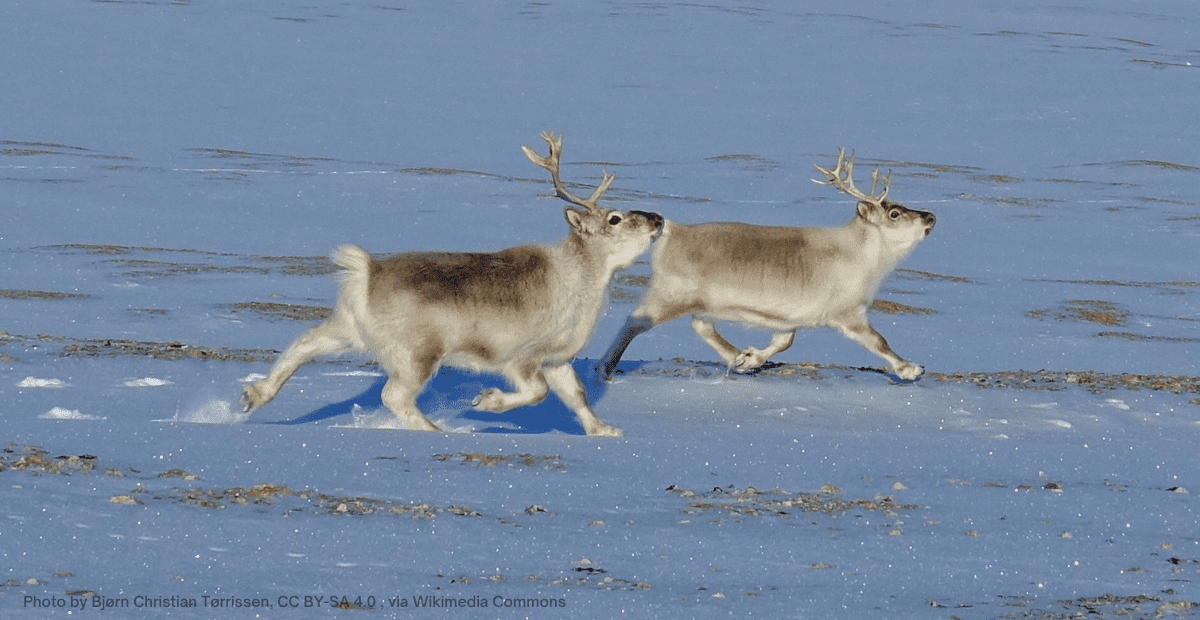In this blog post, we share with you the extraordinary conservation success story of the Svalbard reindeer —one that highlights the resilience of nature when given a chance to recover. This subspecies of reindeer faced a hard past due to overharvesting and local extirpations. However, conservation efforts and changing environmental conditions have led to an incredible comeback in their population.
A study published in the Journal of Wildlife Management sheds light on the distribution and abundance of Svalbard reindeer. It provides valuable insights into their recovery journey and the challenges they continue to face.
Led by a team of researchers, the study “A century of conservation: The ongoing recovery of Svalbard reindeer” (Le Moullec et al., 2019) utilized a combination of distance sampling and total counts to estimate reindeer numbers across their entire range, comparing historical data and radiocarbon-dated bones to assess their progress.
Jump links
- The Svalbard Reindeer Overview
- Study Findings: A Conservation Success Story
- Svalbard Reindeer Population Determinants
This subspecies is lucky to experience good news, but other species are not. We try to bring light to currently endangered species that are not as popular as a polar bear or turtles. You can read about them in our Endangered Animals section, below are some of the posts featured there:
- The Mountain Chicken is Actually a Frog, and It’s Endangered.
- Blue Racer Snake (Coluber constrictor foxii): Canada’s Rarest
- Critically endangered species without conservation efforts
- Animals Assessed as Critically Endangered in 2023

The Svalbard Reindeer Overview

Before we go into the findings of the study, we should give a brief description that helps you get to know the main character of this Conservation Success Story.
Rangifer tarandus platyrhynchus is one of the smallest subspecies of reindeer.
Where does the Svalbard Reindeer live?

The Svalbard reindeer is endemic to the Svalbard archipelago of Norway. It resides on nearly all non-glaciated areas of the islands, adapting to the harsh Arctic climate over thousands of years.
What Does the Svalbard Reindeer Look Like?

Compared to other reindeer, the Svalbard reindeer is characterized by its short-legged stature and small, rounded head. Its fur is lighter in color and thicker during winter, contributing to a plump appearance. Males develop large antlers from April to July. While females grow antlers starting in June and retain them for a whole year.
What Does the Svalbard Reindeer eat?

During the short Arctic summer, Svalbard reindeer feed on a variety of tundra vegetation, including grasses, herbs, sedges, and deciduous shrubs found in lowland plains and valleys. This vegetation provides them with essential nutrients and helps them accumulate fat reserves for the harsh winter months.
Is the Svalbard Reindeer Dangerous?
They are not inherently dangerous to humans. They tend to be relatively sedentary and are generally curious about people. As a result, they approach cautiously to investigate before deciding whether to run or resume feeding. However, we want to emphasize the importance of respecting wild animals and maintaining a safe distance to prevent potential conflicts, as interactions with wildlife can be unpredictable.
Study Findings: A Conservation Success Story
The findings reveal a striking resurgence of Svalbard reindeer populations, with recolonization efforts returning them to nearly all non-glaciated lands. This feat echoes the claims made in historical records dating back to the nineteenth century. Today, the estimated population is 22,435 individuals. Surpassing previous estimates and showcasing the effectiveness of conservation measures implemented nearly a century ago.
What sets this study apart is its comprehensive approach to assessing reindeer abundance and distribution, considering factors such as vegetation productivity, and past extirpation events. By analyzing data from both distance sampling and total counts, researchers were able to paint a detailed picture of the current state of the populations of this subspecies, identifying areas of incomplete recovery and highlighting the importance of ongoing monitoring and conservation efforts.
Svalbard Reindeer Population Determinants
Importance of Vegetation
One of the key factors influencing reindeer abundance is vegetation productivity, with areas of higher productivity correlating with greater reindeer densities. However, regions that experienced past extirpation events due to overharvesting still exhibit lower reindeer densities, indicating that recovery from historical pressures is still underway. This highlights the need for continued conservation efforts in these areas to ensure the long-term viability of the species.
Implications of Climate Change in Svalbard Reindeer Population
Climate change presents both opportunities and challenges for Svalbard reindeer. While warmer temperatures and longer summers may enhance vegetation productivity, increasing the carrying capacity of the ecosystem, climate-related events such as rain-on-snow events pose significant threats to population growth, particularly in densely populated areas. Understanding these complex interactions between environmental factors and reindeer populations is crucial for effective conservation management in the face of ongoing environmental change.
Conclusion
The success of Svalbard reindeer conservation serves as hope in a world grappling with biodiversity loss and habitat degradation.
The research findings discussed here, prove that by protecting wilderness areas and implementing conservation measures, we can safeguard iconic species like the Svalbard reindeer. As well as preserve the fragile ecosystems they inhabit.
As we continue to navigate the challenges of a rapidly changing world, studies like this remind us of the resilience of nature and the importance of our role as stewards of the planet.

